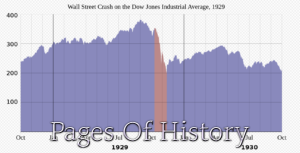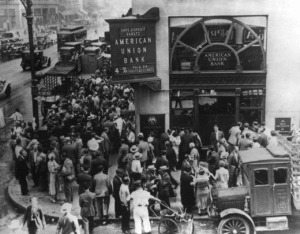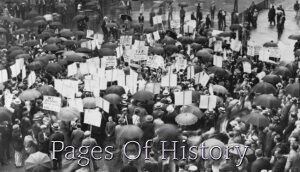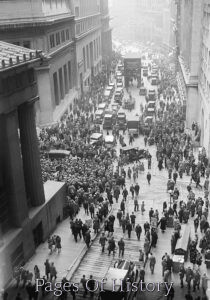A Comprehensive Analysis of the Great Depression: A Dark Chapter in American History
A Prelude to the Great Depression: The Roaring Twenties
The Great Depression - 1920s, also known as the Roaring Twenties, was a time of unprecedented economic prosperity in America. A booming stock market, rapid industrialization, and the rise of consumerism created an aura of optimism and invincibility. The growth of the automobile industry and the advent of new technologies fueled a seemingly unstoppable economic engine.
The Wall Street Crash: The Beginning of the End
On October 24, 1929, the unthinkable happened. The stock market began a precipitous decline that would come to be known as the Wall Street Crash of 1929. As panic ensued, investors frantically sold off their stocks, leading to a massive loss of wealth and the beginning of the Great Depression.
The Unraveling of the American Dream: Unemployment and Poverty
The Great Depression was a time of profound suffering and despair. Unemployment rates skyrocketed, reaching as high as 25% at the peak of the crisis. Breadlines, soup kitchens, and shantytowns called "Hoovervilles" became emblematic of the era as millions of Americans struggled to survive.
The Dust Bowl: A Natural Disaster Compounding the Economic Tragedy
The 1930s also brought a series of devastating droughts and dust storms, primarily in the American Midwest. These events, known as the Dust Bowl, rendered fertile land barren and forced thousands of families to abandon their homes and livelihoods.
The New Deal: A Beacon of Hope Amidst the Darkness
In 1933, Franklin D. Roosevelt took office as the 32nd President of the United States. With a nation in crisis, he quickly enacted a series of programs and policies aimed at providing relief, recovery, and reform. Collectively, these measures were known as the New Deal.
The Social Security Act: A Lifeline for the Most Vulnerable
One of the most significant accomplishments of the New Deal was the passage of the Social Security Act in 1935. This groundbreaking legislation established a social safety net for the elderly, disabled, and unemployed, offering financial assistance to those who needed it most.
The Road to Recovery: World War II and the End of the Great Depression
The outbreak of World War II in 1939 ultimately led to the end of the Great Depression. As the United States ramped up its war efforts, factories roared back to life, and millions of Americans found employment in the burgeoning defense industry. The war not only revitalized the economy but also transformed America into a global superpower.
The Legacy of the Great Depression: Lessons Learned and Unlearned
The Great Depression is a dark chapter in American history, a time of immense pain, suffering, and loss. It stands as a stark reminder of the fragility of economic systems and the importance of sound economic policy. Yet, the human spirit's resilience shone through, as the nation eventually emerged stronger, more unified, and more determined than ever before.
In the echoes of history, we find wisdom and guidance. The Great Depression teaches us to remain vigilant and to seek balance in our economic pursuits. May the lessons of the past serve as a beacon, illuminating the path toward a more stable, prosperous, and equitable future.
Unearthing the Gems of History: Delving Deeper into the Great Depression
To fully grasp the magnitude of the Great Depression and its enduring impact on American society, it is essential to explore the wealth of knowledge preserved within the annals of history. The following resources offer invaluable insights into the era, painting a vivid picture of the trials and tribulations faced by a nation on the brink.
References
- Bernanke, B. S. (2000). Essays on the Great Depression. Princeton University Press.
- Eichengreen, B. (1992). Golden Fetters: The Gold Standard and the Great Depression, 1919-1939. Oxford University Press.
- Galbraith, J. K. (1954). The Great Crash, 1929. Houghton Mifflin.
- McElvaine, R. S. (1993). The Great Depression: America 1929-1941. Times Books.
- Steinbeck, J. (1939). The Grapes of Wrath. Viking Press.
- Tindall, G. B., & Shi, D. E. (2016). America: A Narrative History (10th ed.). W. W. Norton & Company.
- Watkins, T. H. (1993). The Great Depression: America in the 1930s. Little, Brown and Company.
In the Footsteps of Giants: A Conclusion
The Great Depression stands as a monument to human suffering, a testament to the fragility of our economic systems and the indomitable spirit that resides within us all. Through the tears and anguish, the resilience and determination, we find a story of hope, of a nation, rising from the ashes to reclaim its place on the world stage.
As we traverse the annals of history, let us not forget the lessons learned from the depths of despair. For in these pages, we uncover the wisdom and the courage that has shaped the course of human events. The Great Depression, a dark and stormy night, ultimately gave way to a new dawn, as the nation emerged, stronger and more resilient than ever before.
So let the past be our guiding light, a beacon that illuminates our path toward a brighter future. For it is in the echoes of history that we find the strength to persevere, to overcome, and to forge a new destiny, bound together by the enduring bonds of our shared humanity.






